Bistow/Bastow Little Bob
Bistow/Bastow Little Bob is an excellent choice for those just starting to ring methods. The Treble line is very easy, just alternating between leading and seconds… so it is good for learning the absolute basics of rope sight.
For those at the next stage, the line has plenty of movement to practice dodges and because the leads are only 4 changes long, there is plenty of opportunity to practice bobs and singles too.
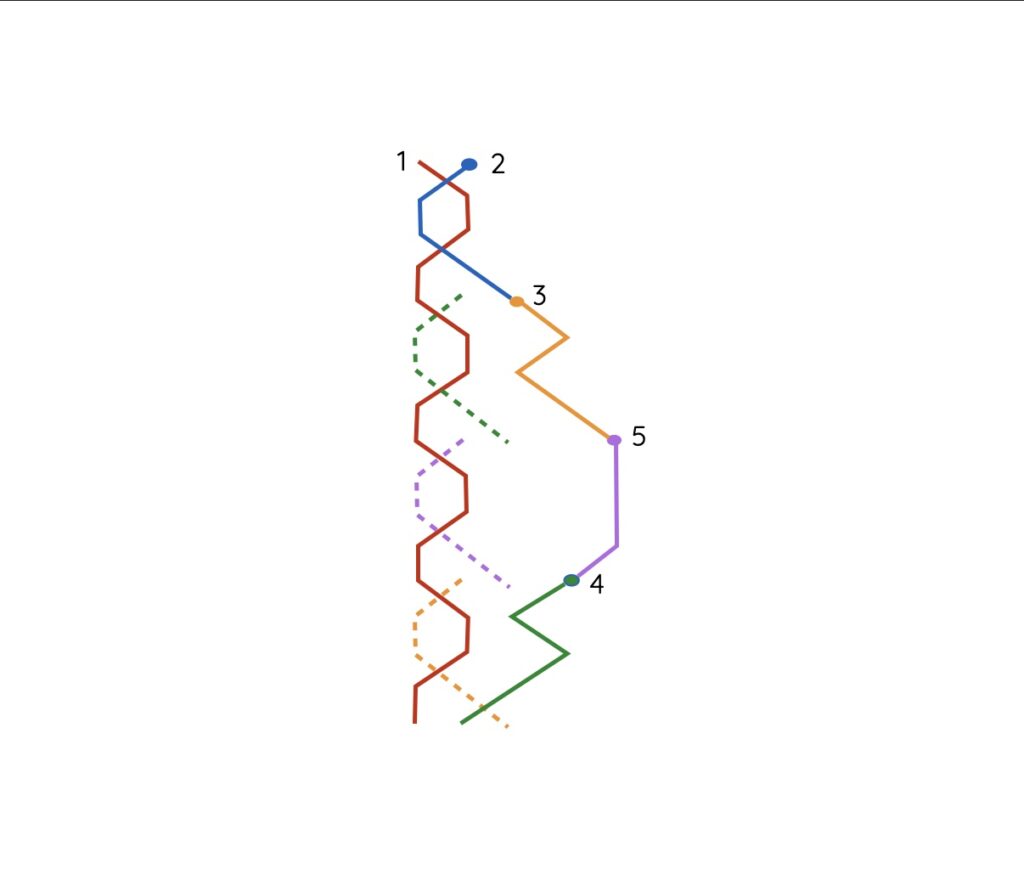
Bistow Little Bob Doubles
A simple method based on standard plain bob working…. 3-4 up, 4 blows, 3-4 down and seconds.
A ‘Little’ method, because the treble does not actually visit all 5 places… it only does 1st and 2nd…
Because of this, the maximum number of changes possible is only 48… 2/5ths of the normal 120.
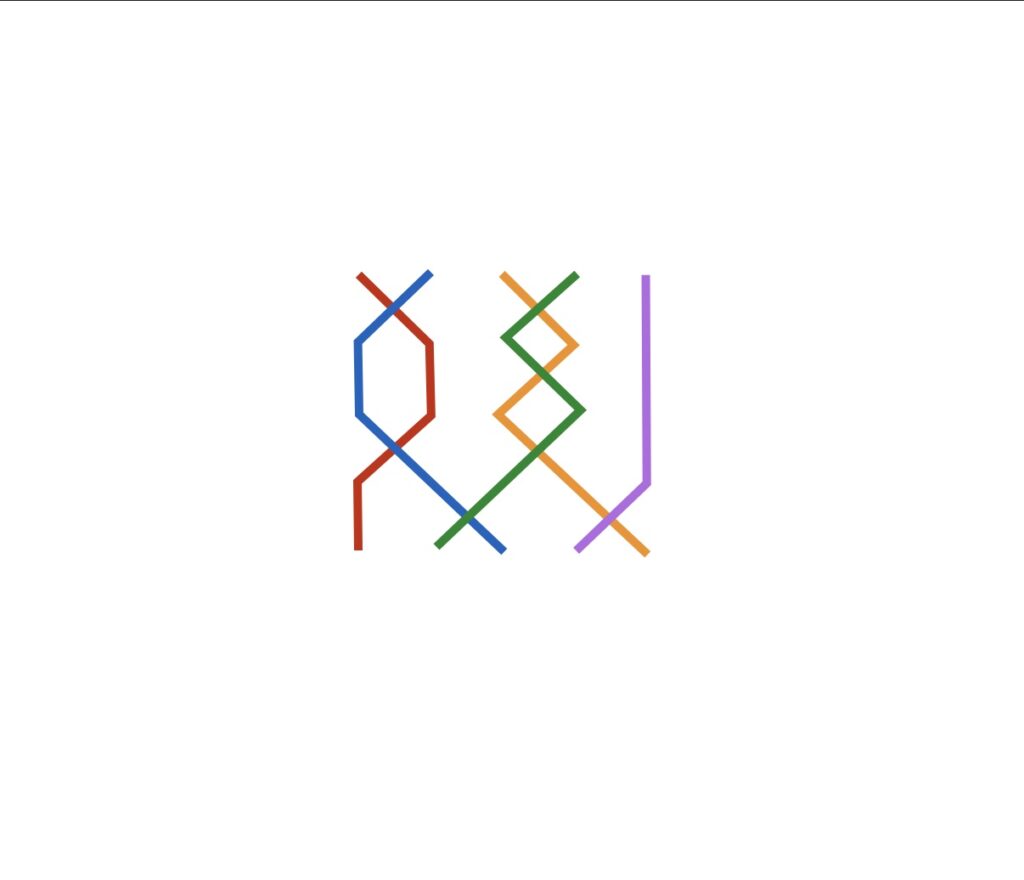
Bistow for Beginners...
Each lead end (part) is only 4 blows in length…
If you are learning to cover (doubles, triples, caters) this is a good place to start… you ring 4 blows over each bells as it reaches the back… Remember, in doubles the lie is always offset from leading by one blow…. so back and hand twice.
The treble (in red) is also ideal as a learners bell…. It alternately leads and makes seconds over all the other bells.
For everyone else, the work is very similar to Bob doubles, but with everything compressed together. However, unlike Plain Bob, the dodge happens when the treble is in seconds, not at the lead end… so the bobs are slightly different.
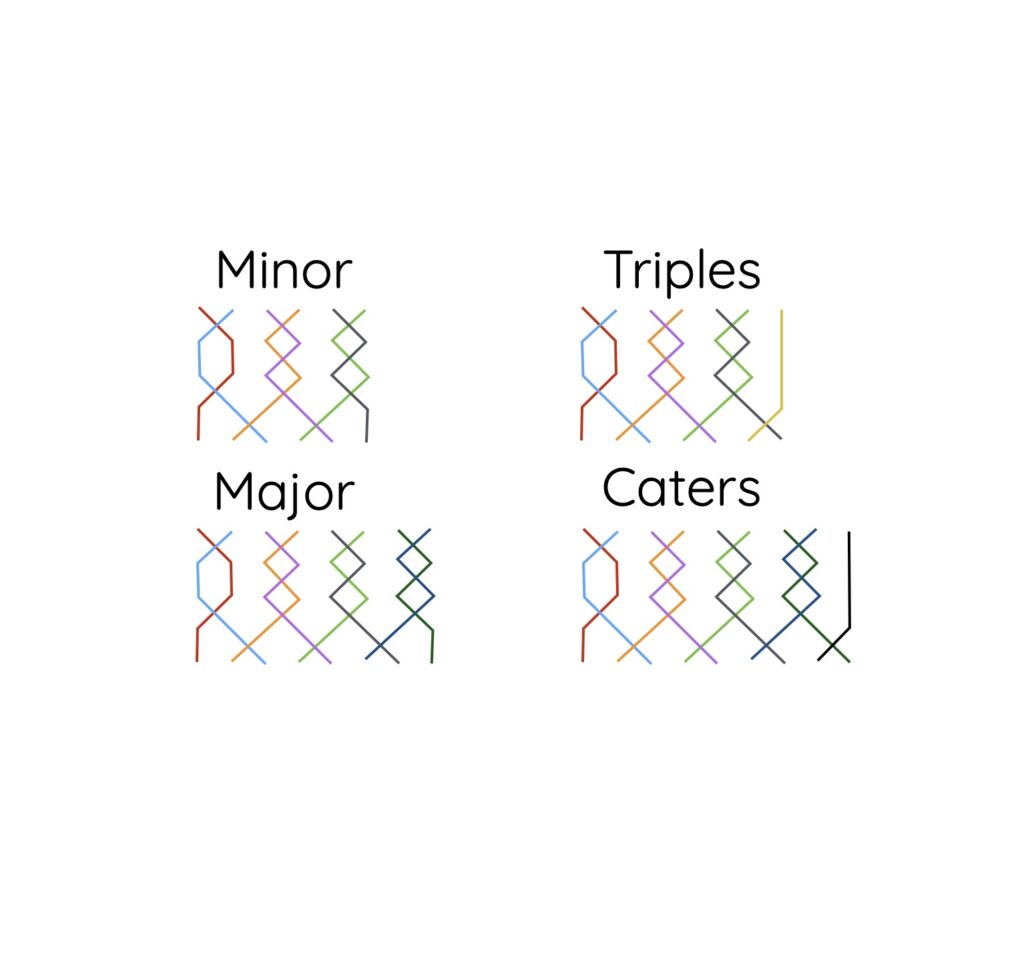
Extending to Higher Numbers
Because this is a ‘little’ method, adding more bells doesn’t make the leads longer… they are always 4 changes long!
Just like all methods, adding more bells, does add more work though… 4 more changes per bells.
- In minor, we add up and down dodges in 5-6 instead of 4 blows in 5th.
- In triples it will be minor with the addition of 4 blows in 7th place.
- For Major, the addition 7-8 dodges instead of 4 in 7ths…
- In Caters, it is major with the addition of 4 blows in 9ths place
- …and for Royal, the addition of 9-10 dodges instead of 4 blows in 9ths.
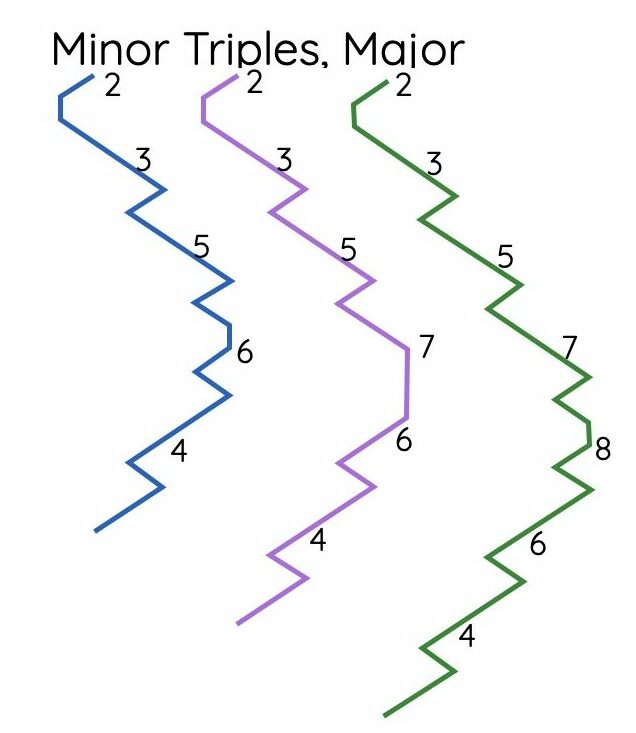
More Bells...?
So it is simple to extend Bistow/Bastow to higher numbers… just add more dodges…
- Minor is now 3-4 (up), 5-6 (up), 6-5 (down), 4-3 (down), seconds.
- In Triples it is 3-4 (up), 5-6 (up), 4 blows behind, 6-5 (down), 4-3 (down), seconds…
- For Major – 3-4 (up), 5-6 (up), 7-8 (up), 8-7 (down), 6-5 (down), 4-3 (down), seconds…
The treble does exactly the same in all, just adding in the extra bells.
For even higher numbers… just continue the same process!
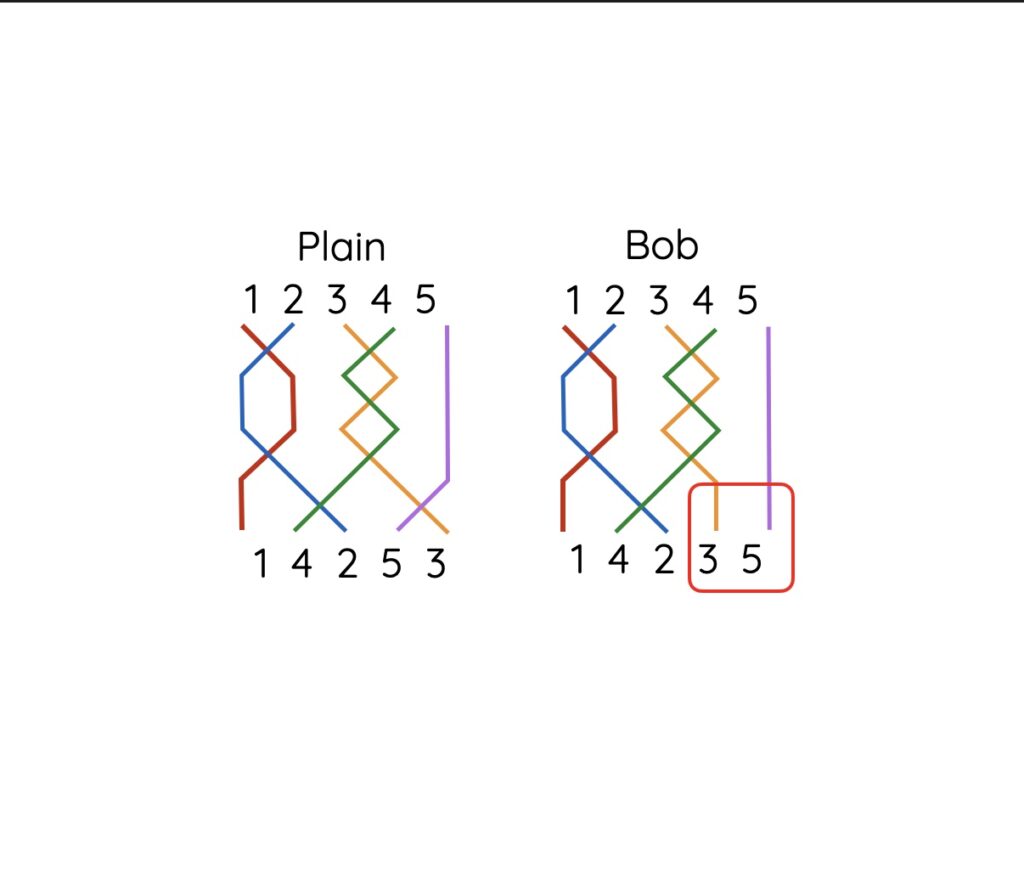
Bobs for Doubles
Bobs in Bistow are not quite as you would expect… this is because the dodges occur at the half lead not the lead end!
Like most Doubles methods, only a Bob is needed!
It is a 4ths place bob, so is just like most other methods…
Only 3rds place bell and 5ths place bell are affected…. they effectively swap over.
- 3rds place bell will make 4ths (the bob) after the 3-4 (up) dodge and then move straight on to the 4-3 (down) dodge.
- 5th place bells will stay at the back and repeat the 4 blows behind… (effectively 8 blows behind)
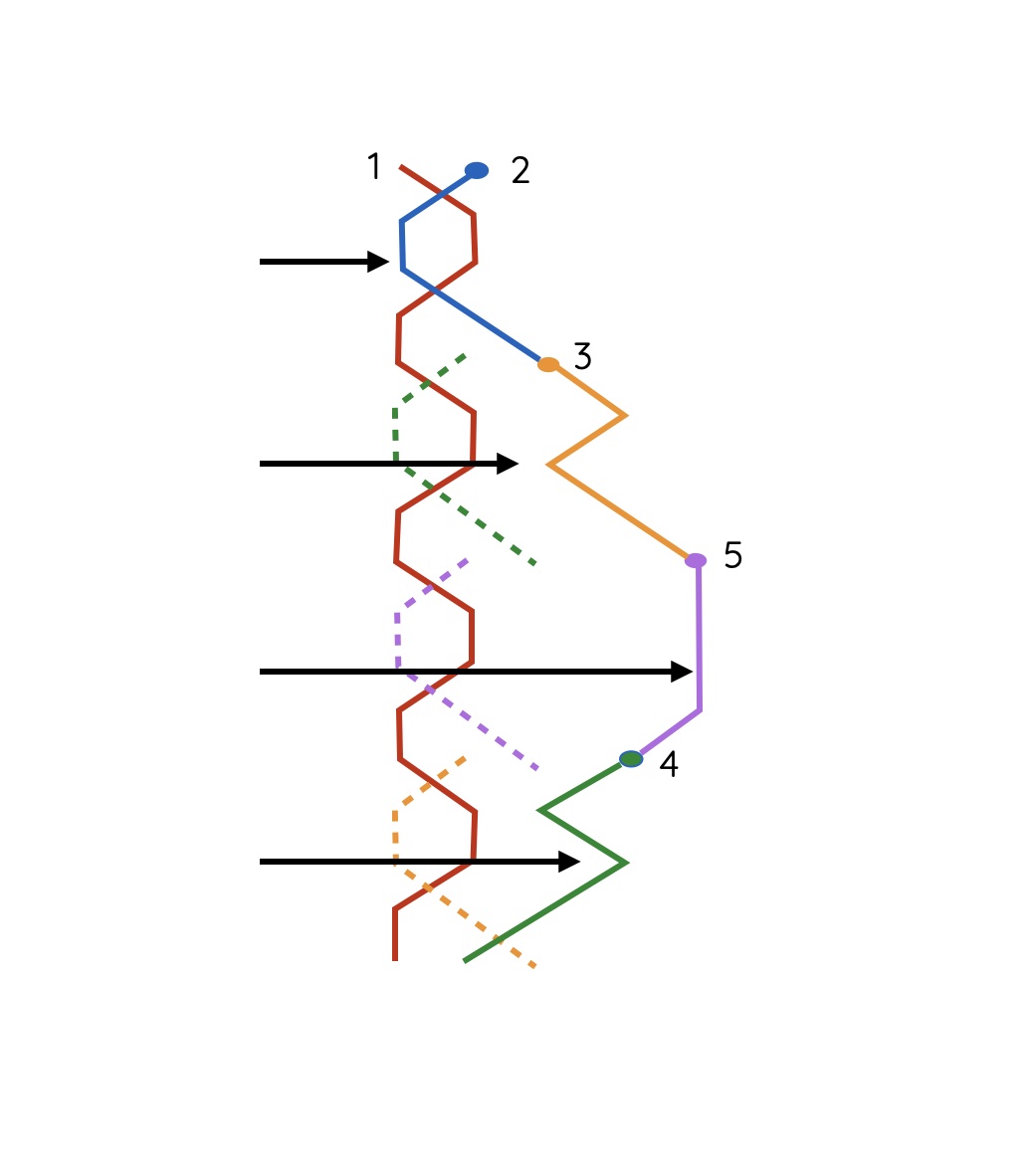
Calling Positions
If you are familiar with calling Plain Bob or other methods with a dodge at the lead end, then Bastow/Bistow will seem a little strange…
Because the dodges are at the half lead, the calls made in the middle of the dodges…
There are two unaffected calling positions…
- at backstroke lead…
- at the actual dodge of 4-3 down…
The affected positions are…
- as you complete the 3-4 up dodge.
- at the second backstroke of 4 behind.
These calling positions would also apply to higher number versions… so calls are always made at the backstroke as the dodge completes, with the action occurring the following backstroke.
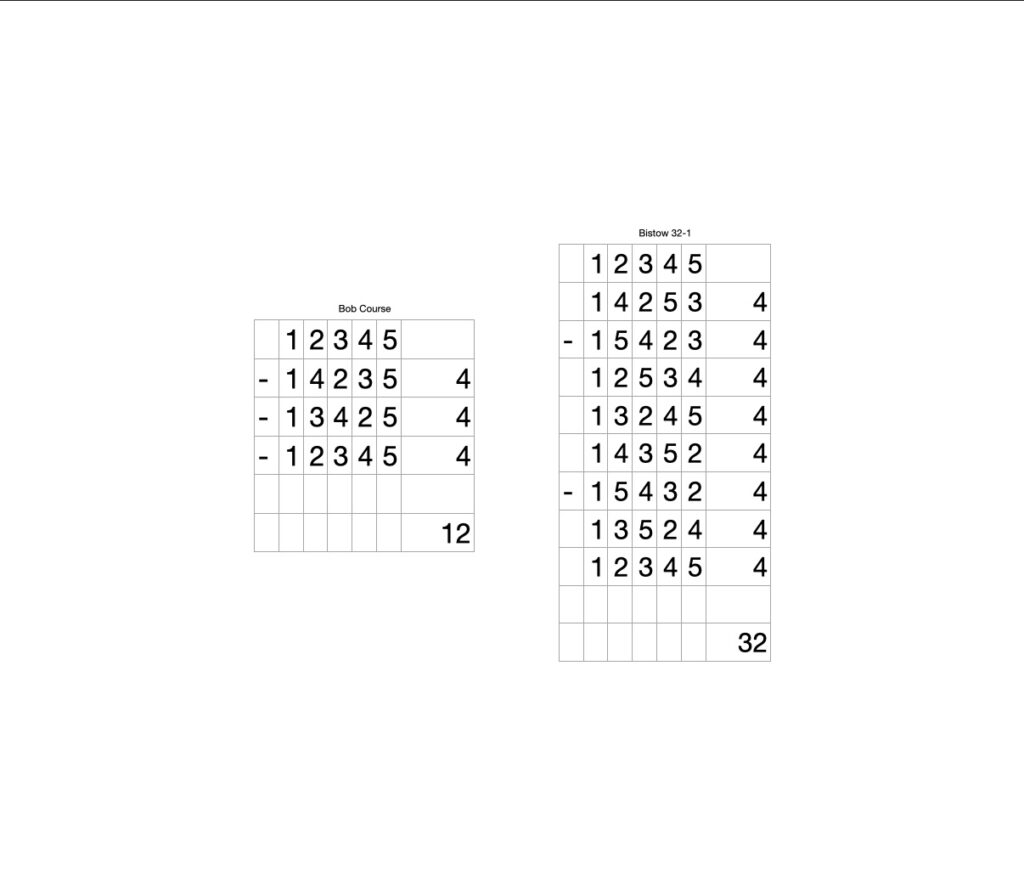
Doubles Touches
Touches of doubles are limited because it is a little bob method.
With the treble only visiting 2 of the 5 places, it limits the maximum changes is 2/5ths of the normal 120… so just 48 max!
A Bob course requires 3 consecutive bobs and is 12 changes long… but very boring for the 5th, as it never moves from that spot!
One Bob in each course will provide 32 changes… Calling yourself after 4-3 down or when leading will leave you unaffected.
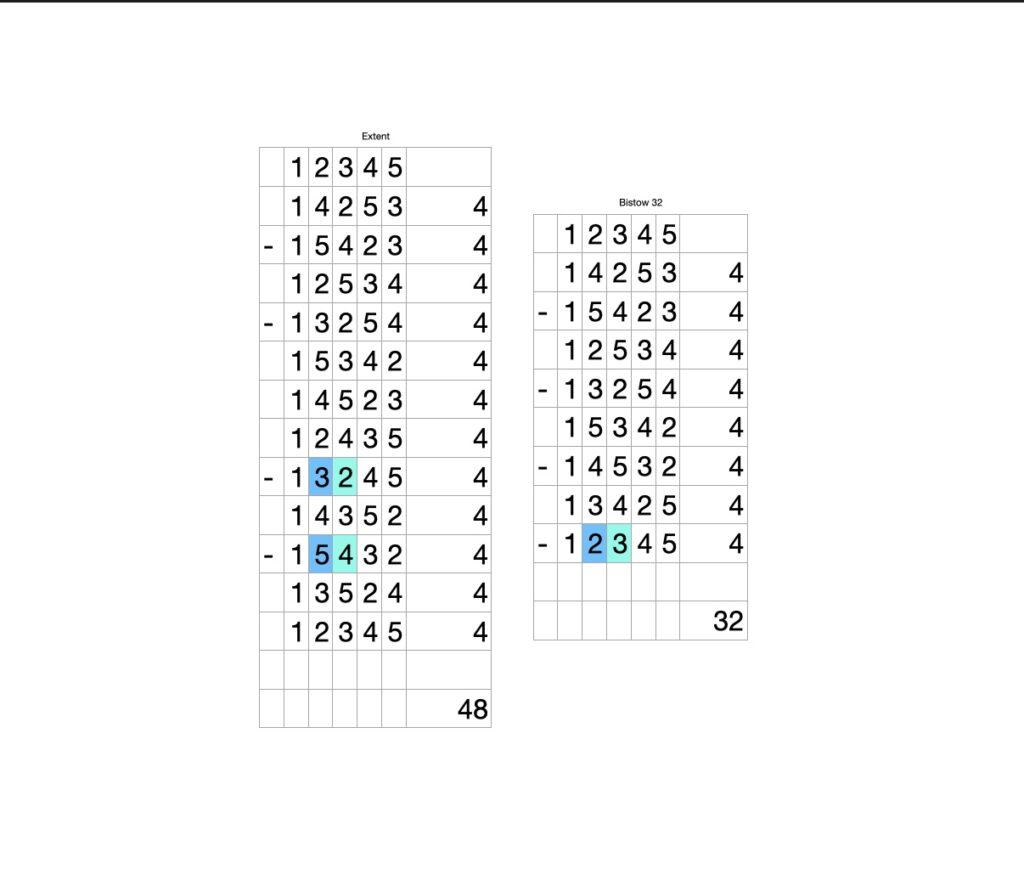
The full 48 changes are created by calling 2 pairs of bobs a course apart… e.g.
- Run in (after 4-3 down).
- 3-4 make the Bob
- end of 4 blows (repeat)
- Run in.
Calling alternate leads uses all the calling positions, but only renders 32 changes...
- 4-3 (unaffected)
- 3-4 make thee Bob
- Leading (unaffected)
- end of 4 blows (repeat)
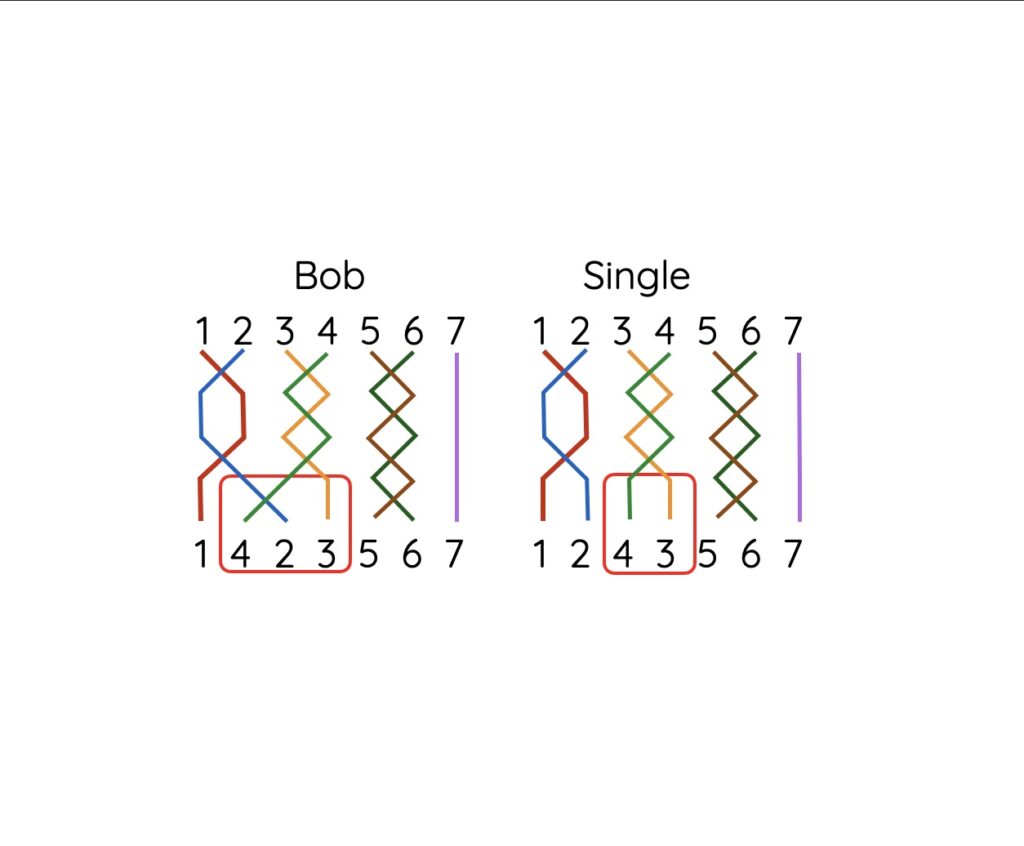
Calling for Higher Numbers...
In Minor and Triples we can use both Bobs and Singles and although it’s the same principle as the Doubles version it is probably best to look at them from a different perspective. Like Kent, all bells beyond 4ths… i.e. the Bob will repeat the previous lead end.
It is best to treat both as a means of repeating the previous lead with either 3 or 2 bells swapped.
- As before… 3rds place bell will make the bob after the 3-4 (up) dodge and then go straight on to 4-3 (down).
- 5th and 6th place bells do an extra dodge which means they become 5th and 6th place bells again and repeat that work effectively adding 2 more dodges to the one already completed (3 in total).
- The bell making 4 blows repeats just as in doubles. (N/A in even bells versions)
At a single, all bells are actually affected… In addition to the list from the Bob…
- 2nds place bell will make seconds and lead again… thus joining 5,6,7 in also repeating the previous lead.
- 4ths place bell will make thirds and become 3rds place bell and then dodge 3-4 up with the same bell it has just dodged with.
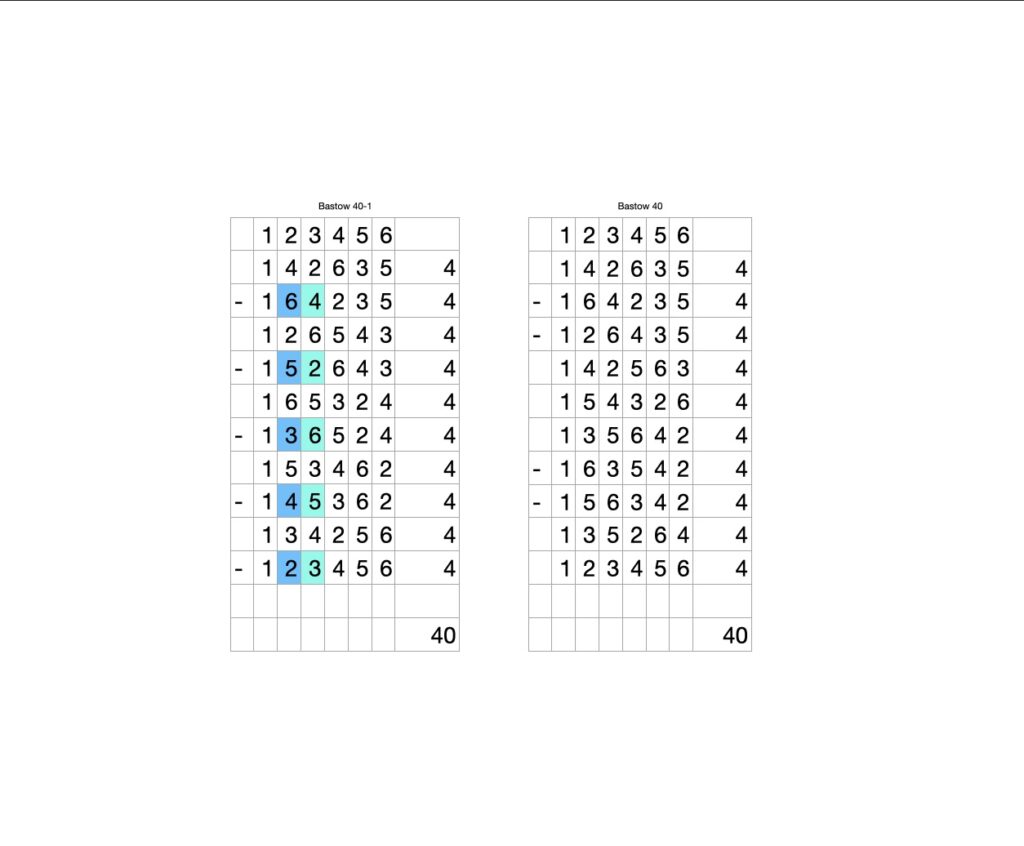
Minor Touches
Alternate Bobs will provide a doubling of length to 40 changes and everyone does everything….
Pairs of Bobs at the two unaffected positions (at 4-3 down and when leading) will also provide 40 changes and can be called from any bell.
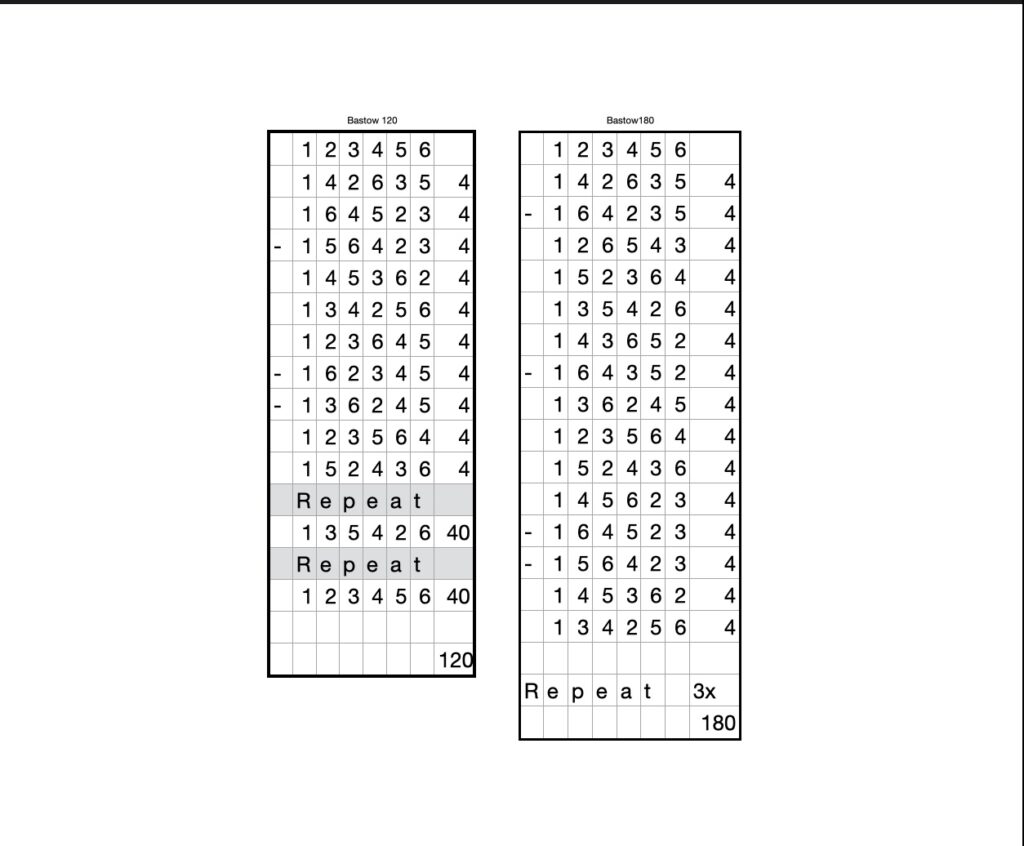
Calling yourself unaffected at any 3 of the 4 positions in two consecutive course will provide a 3-part touch of 120… (It is a variation on ‘Wrong, Home, Wrong’… or ‘In, out, In’…)
In our example (from the 6th)…
- Lead…
- Lead…
- after 4-3 down…
- Repeat 2 more times…
This can be extended to 180 by adding another similar call (effectively W,W,W,H or In, In, In, Out)
- after 4-3 down…
- after 4-3 down…
- after 4-3 down…
- Lead…
- Repeat 2 more times…
Repeat 2 more times…
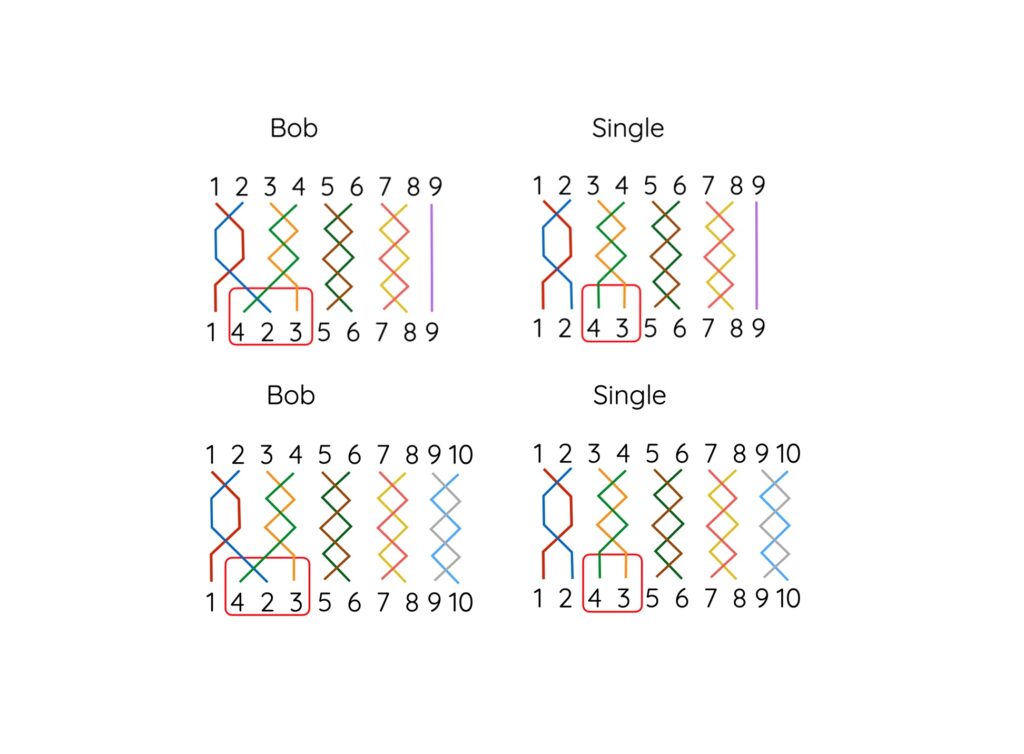
Caters and Royal
The extension should now be quite clear… more bells more dodges… and bob/singles create the same recurring pattern of 2 extra dodges or extra blows behind, for all the higher number bells.
As a good rule of thumb… a touch of Kent will also work with Bastow/Bistow, but will be n x shorter – where n is the number of bells.
The wonderful thing about this is that it means short touches can be rung, yet still offer potential complexity for those learning.

Major, Caters, Royal
- A bob course is only 3 leads… no matter how many bells… so the same as Royal and Major!
- Alternate leads will produce 48, 56, 64 changes respectively and everyone does everything…
- Every third lead will produce 60, 36 or 84 changes respectively… with the 3, 4 or 2 fixed with making all the bobs.
- Like most methods… an added single will require the sequence be repeated double the length.
- A Single alternate leads will produce 64, 80 or 96 changes with the bells 2 & 3 alternately making seconds and the bob.
- A single every third lead will produce 72, 72 & 144 changes with the 3rd always making the Bob.
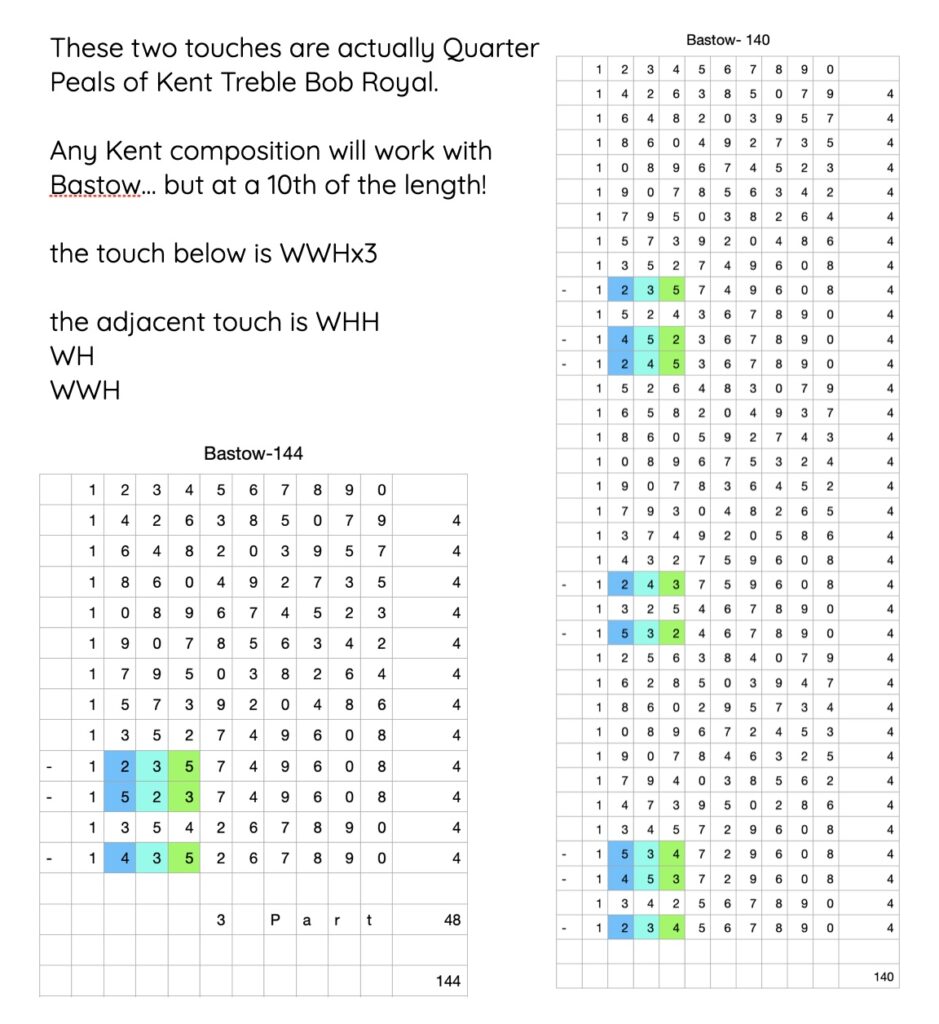
Major, Caters, Royal
And you can also use Kent compositions for Royal and Caters too… except that they come out 10 or 11 times shorter… at 132 and 128 changes respectively…
